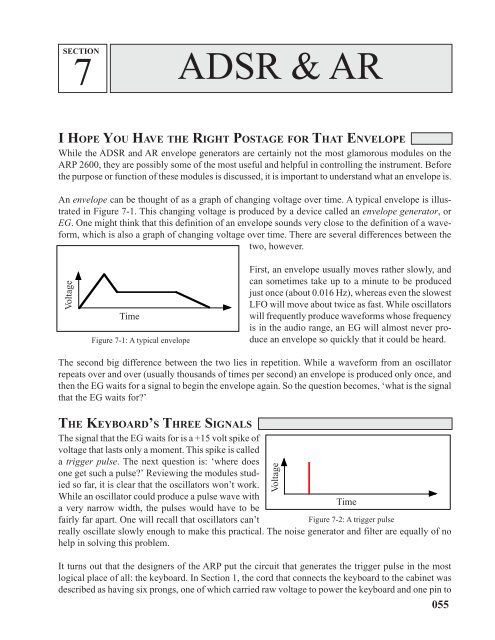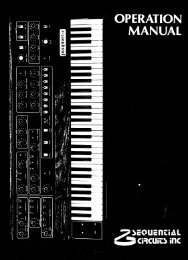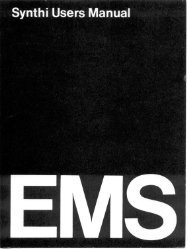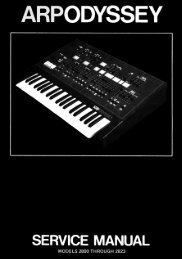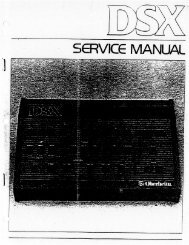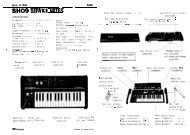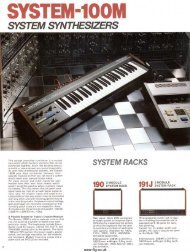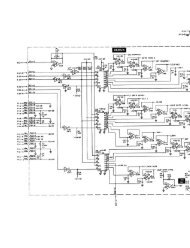ARP2600 - Fundamentals of Music Technology - Cyborgstudio.com
ARP2600 - Fundamentals of Music Technology - Cyborgstudio.com
ARP2600 - Fundamentals of Music Technology - Cyborgstudio.com
You also want an ePaper? Increase the reach of your titles
YUMPU automatically turns print PDFs into web optimized ePapers that Google loves.
SECTION7 ADSR & ARI HOPE YOU HAVE THE RIGHT POSTAGE FOR THAT ENVELOPEWhile the ADSR and AR envelope generators are certainly not the most glamorous modules on theARP 2600, they are possibly some <strong>of</strong> the most useful and helpful in controlling the instrument. Beforethe purpose or function <strong>of</strong> these modules is discussed, it is important to understand what an envelope is.An envelope can be thought <strong>of</strong> as a graph <strong>of</strong> changing voltage over time. A typical envelope is illustratedin Figure 7-1. This changing voltage is produced by a device called an envelope generator, orEG. One might think that this definition <strong>of</strong> an envelope sounds very close to the definition <strong>of</strong> a waveform,which is also a graph <strong>of</strong> changing voltage over time. There are several differences between thetwo, however.VoltageTimeFigure 7-1: A typical envelopeFirst, an envelope usually moves rather slowly, andcan sometimes take up to a minute to be producedjust once (about 0.016 Hz), whereas even the slowestLFO will move about twice as fast. While oscillatorswill frequently produce waveforms whose frequencyis in the audio range, an EG will almost never producean envelope so quickly that it could be heard.The second big difference between the two lies in repetition. While a waveform from an oscillatorrepeats over and over (usually thousands <strong>of</strong> times per second) an envelope is produced only once, andthen the EG waits for a signal to begin the envelope again. So the question be<strong>com</strong>es, ‘what is the signalthat the EG waits for?’THE KEYBOARD’S THREE SIGNALSThe signal that the EG waits for is a +15 volt spike <strong>of</strong>voltage that lasts only a moment. This spike is calleda trigger pulse. The next question is: ‘where doesone get such a pulse?’ Reviewing the modules studiedso far, it is clear that the oscillators won’t work.While an oscillator could produce a pulse wave withTimea very narrow width, the pulses would have to befairly far apart. One will recall that oscillators can’tFigure 7-2: A trigger pulsereally oscillate slowly enough to make this practical. The noise generator and filter are equally <strong>of</strong> nohelp in solving this problem.It turns out that the designers <strong>of</strong> the ARP put the circuit that generates the trigger pulse in the mostlogical place <strong>of</strong> all: the keyboard. In Section 1, the cord that connects the keyboard to the cabinet wasdescribed as having six prongs, one <strong>of</strong> which carried raw voltage to power the keyboard and one pin to055Voltage


